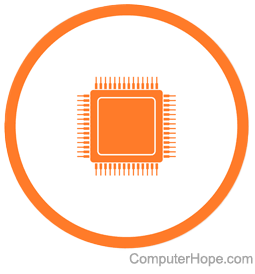Processing
Processing may refer to any of the following:

1. In general, processing describes the interpretation and manipulation of data by a system. With computers, this task is carried out by the CPU (central processing unit) as part of the IPOS (input, processing, output, and storage) steps. More plainly, processing is what your computer does with the information it receives (input) to produce some result (output).
For example, when you double-click a shortcut on your desktop, your processor interprets the signal and tells the computer's operating system to load the program. As another example, when you move your mouse, it sends position data to the processor. Then, the processor (again by interacting with the operating system) "tells" your monitor to display the mouse pointer moving across the screen accordingly.
Processing power is determined by the number of transistors contained in the processor, its clock speed, number of cores, and other factors. According to Moore's Law, the number of transistors contained in a processor will double every year, continuing to increase the available processing power for a computer.
The word "processing" is part of many computer terms. Use our word and letter search to see all computer terms containing processing.
2. Processing is a graphics library and IDE (integrated development environment) based on the Java programming language, released in 2001 by developers Casey Reas and Ben Fry. Its goal is to simplify computer programming for visual artists by providing new classes and mathematical functions for creating and processing computer graphics. Its IDE, called Sketchbook, uses an abstraction called a "sketch" to represent its fundamental Java class.
102, Batch processing, Compute, CPU terms, Crunch, Data processing, Processing device, Word processing
